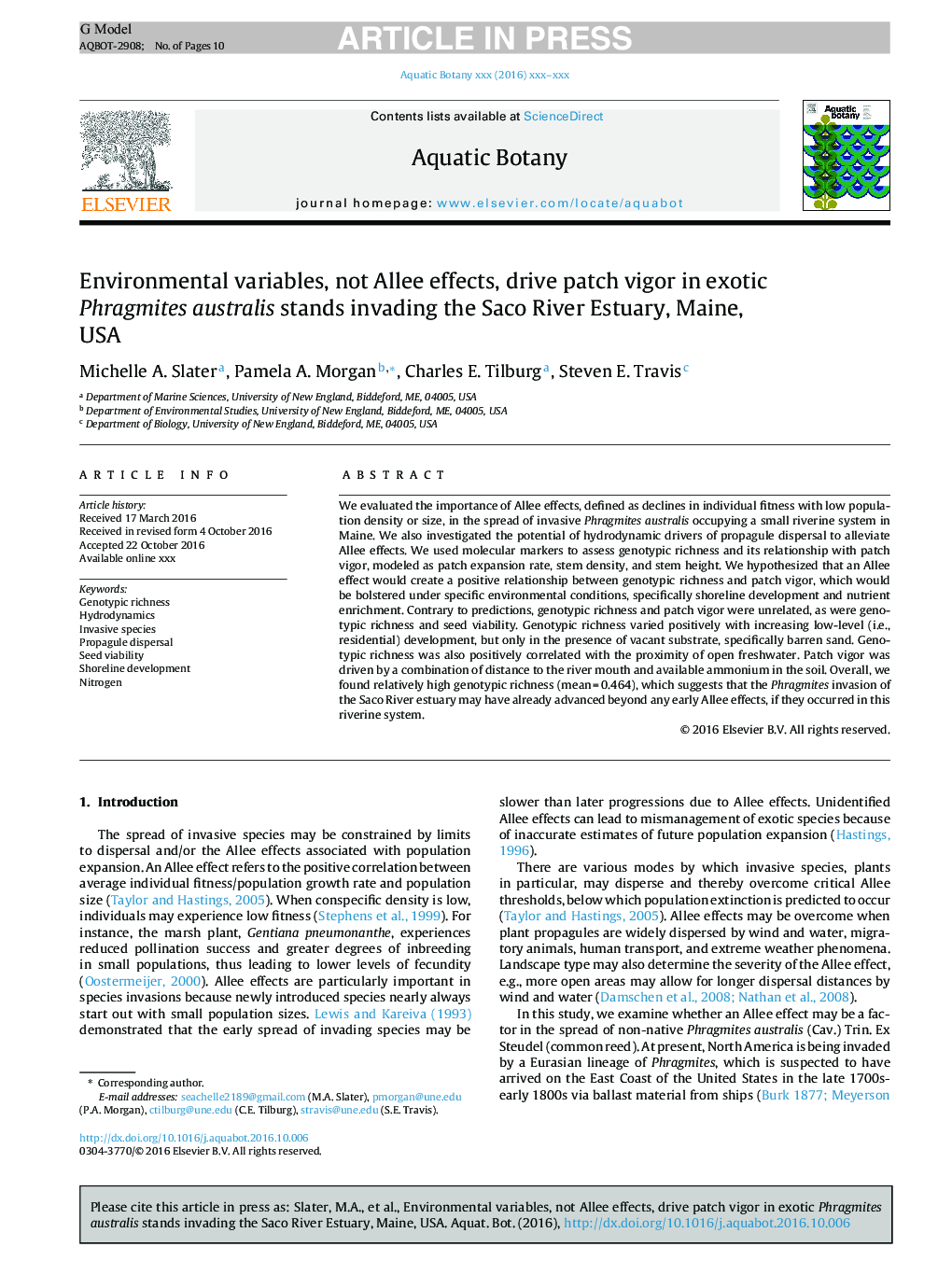| Article ID | Journal | Published Year | Pages | File Type |
|---|---|---|---|---|
| 8883613 | Aquatic Botany | 2017 | 10 Pages |
Abstract
We evaluated the importance of Allee effects, defined as declines in individual fitness with low population density or size, in the spread of invasive Phragmites australis occupying a small riverine system in Maine. We also investigated the potential of hydrodynamic drivers of propagule dispersal to alleviate Allee effects. We used molecular markers to assess genotypic richness and its relationship with patch vigor, modeled as patch expansion rate, stem density, and stem height. We hypothesized that an Allee effect would create a positive relationship between genotypic richness and patch vigor, which would be bolstered under specific environmental conditions, specifically shoreline development and nutrient enrichment. Contrary to predictions, genotypic richness and patch vigor were unrelated, as were genotypic richness and seed viability. Genotypic richness varied positively with increasing low-level (i.e., residential) development, but only in the presence of vacant substrate, specifically barren sand. Genotypic richness was also positively correlated with the proximity of open freshwater. Patch vigor was driven by a combination of distance to the river mouth and available ammonium in the soil. Overall, we found relatively high genotypic richness (mean = 0.464), which suggests that the Phragmites invasion of the Saco River estuary may have already advanced beyond any early Allee effects, if they occurred in this riverine system.
Keywords
Related Topics
Life Sciences
Agricultural and Biological Sciences
Aquatic Science
Authors
Michelle A. Slater, Pamela A. Morgan, Charles E. Tilburg, Steven E. Travis,
